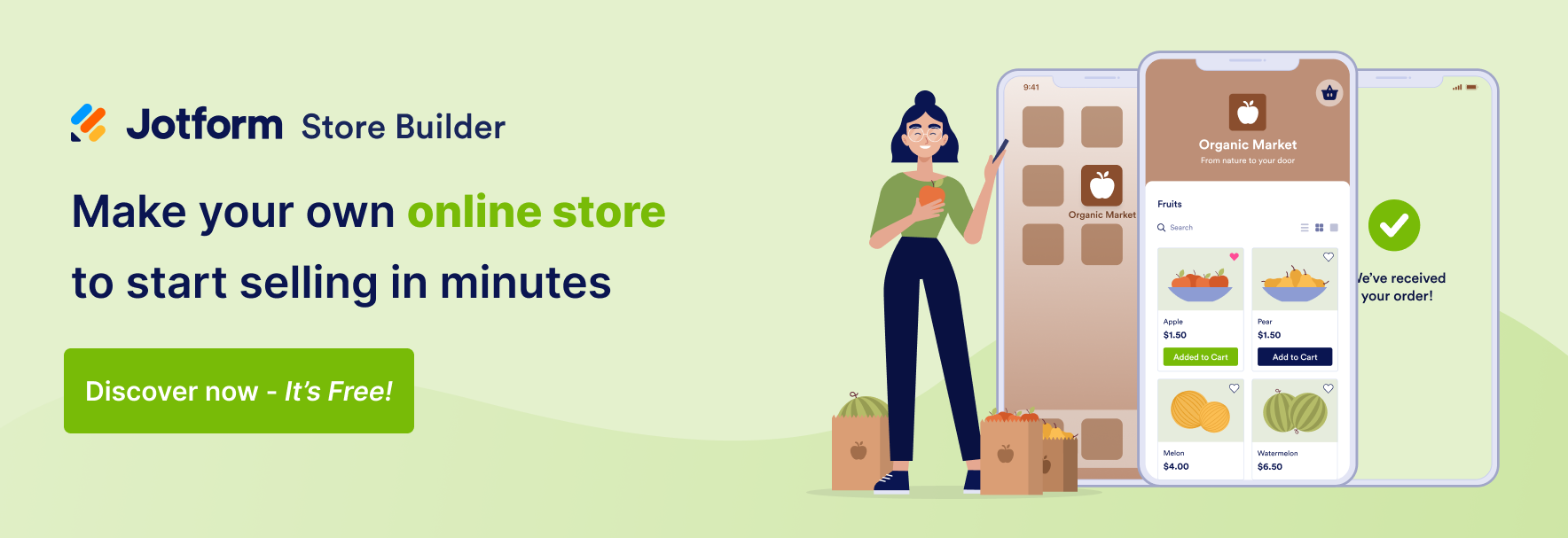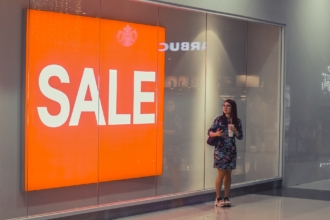The direct-to-consumer sales model blends producer, marketer, and retailer into a single entity, the D2C brand. It bypasses traditional brick-and-mortar retailers and online superstores (at least, at first; many D2C brands end up on store shelves after building a loyal consumer base).
It makes sense that product-subscription sellers so often adopt the D2C model. The subscription eliminates the need for intermediaries between brands and customers, and subscriptions are perfect for fast-moving consumer goods, or FMCGs.
By definition, FMCGs are low-cost, consumable, quick-selling products that are used and replaced in an ongoing cycle. Think personal care products, cosmetics, and packaged foods, for instance. Consumers must replenish them frequently; that’s what puts them in their own category. And what better way to secure customer loyalty than with a D2C subscription?
Check it out…
Need to collect payments online? Sell products, book services, and gather donations with Jotform — while paying no additional transaction fees.
The Dollar Shave Club is a classic example. It applied a D2C subscription model to shaving cream and razors — a quintessential FMCG — and the brand performed well enough for Unilever to buy the company for a cool $1 billion at a time when it wasn’t even making a profit.
More recently, D2C toilet paper subscription brands like Bippy and No. 2 surged when pandemic buying emptied retail shelves.
All in all, D2C e-commerce sales in the U.S. more than doubled between 2017 and 2019, with projections showing continued growth. FMCGs are an important part of that expansion. But D2C sales won’t work for every company. Here are the challenges and key advantages of selling direct-to-consumer for FMCG brands.
The challenge of a direct-to-consumer model for FMCG companies
There’s a reason FMCG supply chains are often built around centralized retailers: You have to sell a lot of units to make an FMCG profitable, and it isn’t easy to run logistics and sales points while operating a manufacturing company.
“To qualify as a D2C brand, you need to be able to manufacture, sell, ship, and advertise all by yourself, cutting out the retailers or middlemen,” says Hosea Chang, Chief Operating Officer of Hayden Los Angeles, a D2C clothing producer. “You’ll want to have a manufacturing facility, be able to ship, and be able to distribute via your own online store or social media page or elsewhere.”
Third-party services can help, but no matter how you divide the work, it’s a lot. But for FMCG producers that have strong values and a bold vision for branding, the D2C model offers plenty of advantages.
D2C benefits for FMCG brands
We’ve hinted at the value that online subscriptions offer FMCG brands and their customers. They allow consumers to stop worrying about replenishment while getting consistent quality from a brand they’ve come to trust.
Meanwhile, brands get loyal customers — and the marketing data that comes with them. But even FMCG sellers that don’t use a subscription model can benefit from a D2C channel.
That’s because D2C sales offer a more direct route for branding. When you sell directly, there’s no brand competition on the shelf. There’s no retailer’s jingle playing overhead. It’s just the brand and the consumer.
Because the brand interacts directly with the customer at every point, it has ample opportunity to present the brand identity. That makes branding the single most powerful element in a D2C plan for FMCGs, says Chang.
“A strong brand identity is 80 percent of the work for a D2C,” Chang says. “Determine who you are as a brand, what your aesthetic is, what your values are, and what makes you stand out. As long as you have all these things clear, you can sell directly to the consumer. You will be able to entice them.”
That’s certainly true for FMCGs — just look at the branding-first strategy leading D2C toilet paper companies are taking. Expect to see more FMCG brands dipping into D2C channels soon.









Send Comment: